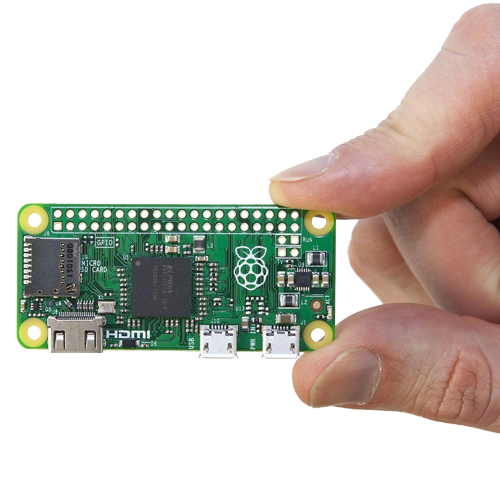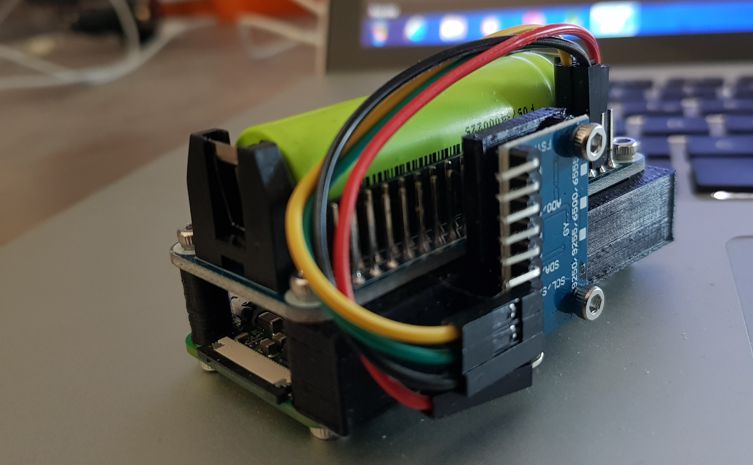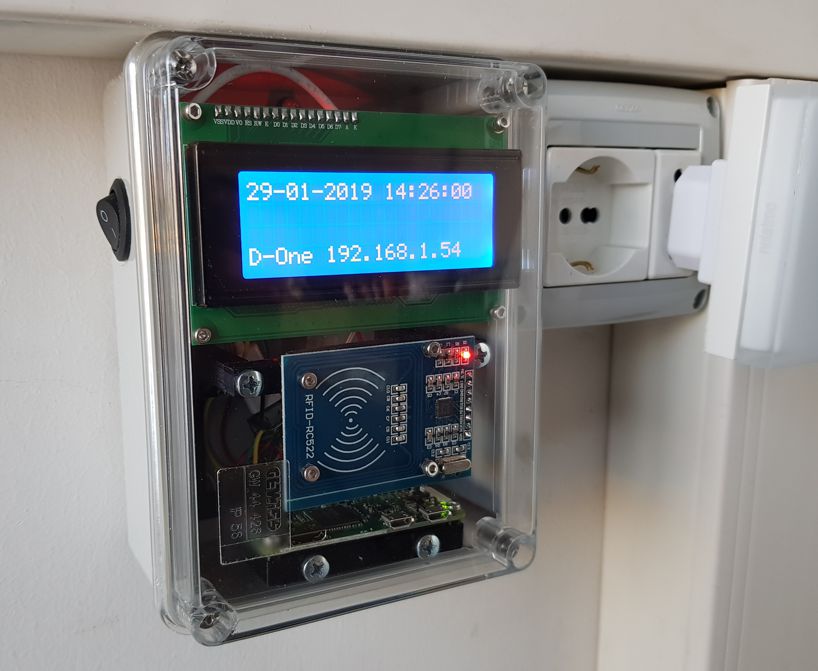Internet of things

Create your IoT devices and take advantage of D-One's software data exchange technology due to the components developed in Python. Due to the development of libraries in Python for data exchange, it is possible to use Linux for IOT for any purpose. Do you want to record weather data, plant moisture, and the presence of your employees at work? The limit is only your imagination. The system's potential consists in the ability to create its own data collection infrastructure, with really low costs, managing the data sharing by the D-One's system.
Raspberry pi zero
By using the Raspberry micro-computer, it is possible to create true Linux machines to manage the D-One's software data. It is possible to create micro-server backup to be able to archive daily your own data. Considering that these computers already have Wi-Fi and Bluetooth module, they can really be placed into any context. Moreover, with a complete GPIO, it is possible to interfacing the D-One's system with electronic sensors in order to extrapolate and transmit any kind of data to the Cloud. Considering the really low cost of this hardware, it's no need to create hundreds of units in order to reduce costs. It is possible to create and develop even a single sample. Below, you will find two examples of use that D-One has developed by using this technology and the Cloud system. The common feature of the two systems is to collect and store data, even off-line and then send them as soon as a connection is available. |
 |
|
Acceleration and inclination collection system for sports bikes The D-One has been asked to develop an stand-alone solution for a sensor that recover and save the acceleration forces and the inclinations suffered by the bike during sports competitions. The sensor is composed of a Raspberry Pi Zero, a power supply module and a gyroscopic sensor. When it's turned on, the gyroscope send the information by using the Raspberry's GPIO to be processed in real time and stored in a database. So, no internet connection is required because all the data is saved locally. After the competition, as soon as the sensor is connected to a Wi-Fi network, it will automatically start transmitting the collected data. These data, will then be viewed with a special application. Due to the use of the D-One's management system, the entire management and synchronization infrastructure was already present. The client has paid for the execution of the hardware and customization required in the application, thereby benefiting from a considerable cost reduction. |
 |
presence detection system in construction sites

The project has led to the creation of a tool for the on-site reporting of the employees' presence in the construction site and mobile work space. The tool, using the RFID tag, marks the time of entry and exit of employees from specific workspaces, archiving the information within it. Then, using a Wi-Fi connection or smartphone, the archived data will be sent to a central server for processing and viewing.
By analyzing the competition, only one instrument of this kind was found, with very high costs in terms of both hardware and software and smartphone management. Considering the goal of our customers, we have considered making a low-cost tool with features that allow it to be used anywhere.
The objectives were:
-
Maintain a low cost of hardware by using standard electronic components easily available on the market, so that, even the customer can perform maintenance operations, if any.
-
Being able to use the presence register anywhere, even without any network connection, including the presence of eventual responsible persons. Furthermore, the use of RFID badges by the staff allows to use it in extreme conditions, since no other phones are required for its use. The only phone that will be used, will be when downloading the data to send to the server, if necessary.
-
That the tool contain a battery inside it to allow use anywhere, and that the power supply is identical to that of the smartphones, allowing to use the normal power supply and power banks units on the market.
- Being able to choose between different configurations to better match the tool to your own needs. The currently available configurations are: the display dimensions, if it is watertight, if it has the GPS location and if a GPRS module is integrated.
-
Making impossible to input counterfeit data, in fact, smartphone applications that save the operator's GPS point can easily be avoided by altering the coordinates with special applications.
-
Being able to receive and use the data from both the D-One's management program and other management programs through specific import-export systems. This will allow customers to use their current IT infrastructure without being constrained to change it.
-
The possibility, through D-One, to realize specific standing solutions to fully adapt the tool's functioning to the customer's needs.
 |
The Raspberry Pi Zero micro-computer was chosen as the basic hardware. This system is famous for its use as basic platform for IoT projects due to its small size and its very low cost. Connected to this, an LCD display, an RFID reader and a battery were added. In the most advanced versions, a GPS module for point saving was integrated and a GPRS modem for direct data transmission in real time. All of the software is written in Python, thus allowing a full level of customization. Here, in fact, is the first substantial difference compared to the other presence registers which, in principle, are not computers and therefore are limited in the functions established during the design phase. Our current presence registry, mounting a true Linux computer, allows to realize any extension for any need. In order to reduce costs and above all to make the system completely autonomous, all data is archived in the presence register even if it is possible to transmit them through the GPRS module. So, for data transfer there will be two specific models:
Both data transmission systems will be present in the presence register to allow for the best possible coverage. The data will be stored in a Cloud server so that it can be accessed by both the D-One's management program, either by the special applications that will interchange this information with the company's management program. For those who do not need a management program, a WEB portal will also be available where you can manage employees and view access data, so that, a complete standalone solution can be provided. Furthermore, a Client Application for Employees will be developed that will allow them to visualize and verify their entries in the different workspaces. |
At present, various prototypes were developed that are used to test the possible critical points of the system and in order to show to the potential customers the various features and potential of the system. The potential customers rely positively on the presence register, especially because it is an instrument that does not require a direct management and is completely autonomous during daily use. The part on which the questions are mainly focused concerns the data management, since it's still in the development phase it's not possible to demonstrate it clearly enough.
The development is focusing on the system software and on the bureaucratic side for the acquisition of trademarks and authorizations to be able to market the object itself.
